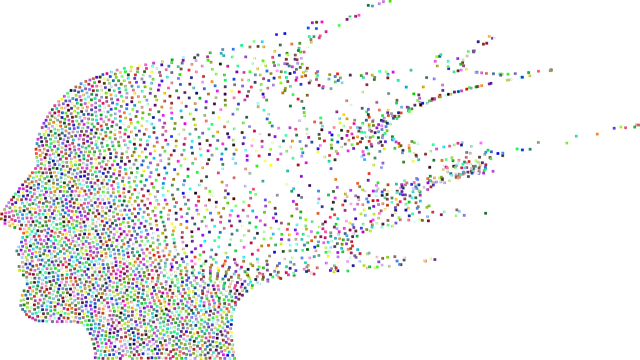Mental wellness apps are gaining popularity as accessible tools to address rising concerns about mental health in today's fast-paced world. Organizations like Kaiser Permanente's mental health locations in Centennial emphasize this need through trauma support services and technology integration, offering creative solutions like podcast series. These apps provide personalized mood tracking, mindfulness exercises, and crisis intervention guidance, fostering community and resilience. Development begins with understanding community needs, as seen in Kaiser Permanente's comprehensive approach at Centennial, involving research, user feedback, and holistic philosophy. Effective marketing strategies include collaborating with healthcare providers, location-based marketing, user testimonials, and engaging content on mental health trends to reach interested individuals in the Centennial area.
Mental wellness apps are transforming access to support, offering individuals a convenient and discreet way to manage their emotional well-being. This article explores the growing importance of these digital tools, using Kaiser Permanente’s innovative approach to mental health locations as a model. We’ll delve into the key features and functionality that define effective apps, dissect the development process from concept to launch, and uncover successful marketing strategies for engaging users at Centennial locations.
- Understanding the Need for Mental Wellness Apps
- Kaiser Permanente's Approach to Mental Health Locations
- Features and Functionality of Effective Mental Wellness Apps
- Development Process: From Concept to Launch
- Marketing and User Engagement Strategies for Mental Wellness Apps at Centennial Locations
Understanding the Need for Mental Wellness Apps

In today’s fast-paced world, mental wellness is a crucial aspect that often goes overlooked until it becomes a pressing issue. This is where mental wellness apps step in as valuable tools to support individuals seeking assistance and guidance for their mental health needs. With an increasing demand for accessible and convenient resources, developers are creating innovative solutions to cater to this growing market. The need for such applications is evident, especially when considering the impact of stress, anxiety, and other mental health challenges on daily life, as highlighted by organizations like Kaiser Permanente mental health locations Centennial.
Addressing mental wellness is no longer a niche concern but a widespread issue affecting people from all walks of life. Trauma support services and mental illness stigma reduction efforts have gained significant traction, pushing for more inclusive and understanding communities. Additionally, the integration of technology into healthcare has opened doors for creative solutions, including the production of mental wellness podcast series that provide valuable insights and support to those in need. These digital resources are transforming the way individuals manage their mental health, offering much-needed assistance beyond traditional therapy sessions.
Kaiser Permanente's Approach to Mental Health Locations

Kaiser Permanente, a renowned healthcare organization, takes a comprehensive approach to mental health services with its dedicated network of locations, particularly highlighted in its Centennial initiatives. These facilities are designed to provide a safe and supportive environment for individuals seeking support for their mental wellness. The organization’s strategy focuses on accessibility, offering various programs and resources tailored to diverse populations.
By integrating Self-Care Practices and Stress Management Workshops, Kaiser Permanente empowers its members with essential tools to manage and maintain their mental health. Additionally, they prioritize the well-being of their professionals through Risk Management Planning, ensuring a comprehensive and holistic approach to mental healthcare in the Centennial region and beyond.
Features and Functionality of Effective Mental Wellness Apps

Effective mental wellness apps are designed to provide users with a range of features and functionalities that support their overall well-being. Key among these are personalized mood tracking, allowing individuals to monitor their emotions over time, and access to curated content like mindfulness exercises, meditation sessions, and educational resources on various mental health topics. Many successful apps also offer crisis intervention guidance, integrating emergency contacts and offering immediate support during times of distress.
The best mental wellness apps further enhance user experience through community features, enabling connections with peers facing similar challenges. This sense of belonging can significantly boost resilience. Additionally, incorporating tools for stress management, such as breathing exercises and progressive muscle relaxation, ensures users have instant access to anxiety relief techniques. Kaiser Permanente mental health locations Centennial, for instance, leverage app technology to expand public awareness campaigns development, making mental wellness resources more accessible to a wider audience.
Development Process: From Concept to Launch

The development process of a mental wellness app begins with conceptualization, much like crafting a personalized treatment plan tailored to an individual’s unique needs. Inspired by the comprehensive mental health services offered by Kaiser Permanente mental health locations Centennial and grounded in Mind Over Matter Principles, developers must first define the app’s purpose and target audience. This involves delving into existing literature on mental health policy analysis and advocacy to understand community needs and existing gaps in care, ensuring the app aligns with current best practices and addresses identified risks.
As the project progresses from concept to launch, the development team conducts rigorous user experience research, incorporates feedback from mental health professionals, and iterates on designs through multiple testing phases. This collaborative approach ensures that the final product is not only effective but also engaging and accessible. Just as Kaiser Permanente’s holistic approach to mental health emphasizes addressing both physical and psychological aspects of well-being, so too should app development prioritize user experience and emotional support alongside educational content and coping strategies.
Marketing and User Engagement Strategies for Mental Wellness Apps at Centennial Locations

Marketing and user engagement strategies for mental wellness apps should be tailored to reach individuals at Kaiser Permanente mental health locations Centennial and beyond. Given the sensitive nature of mental health services, building trust is paramount. Collaborating with established healthcare providers like Kaiser Permanente can lend credibility to your app and encourage users seeking support. Leveraging location-based marketing, such as targeting nearby community centers or schools, can help raise awareness among those in need who might not actively search for such resources.
Emotional regulation and stress reduction methods are crucial aspects to highlight in your marketing campaigns. Incorporate user testimonials and success stories that demonstrate the app’s effectiveness in improving emotional intelligence, especially if they align with real-life experiences at these Centennial locations. Engaging content, such as blog posts or social media threads, focused on current trends in mental health awareness can also draw users interested in exploring their emotional well-being.
Mental wellness apps have emerged as powerful tools in addressing the growing need for accessible, personalized support. As organizations like Kaiser Permanente prioritize mental health initiatives, these apps can play a significant role in expanding care to remote or underserved areas, particularly through their innovative use of technology and location-based services. By focusing on user engagement and marketing strategies tailored to Centennial locations, developers can ensure these mental wellness apps reach those who need them most, fostering a healthier and more connected community.






